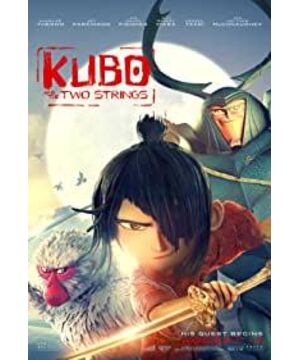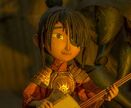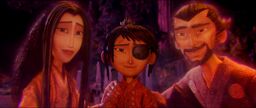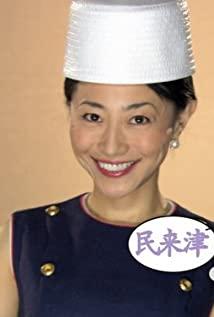"Memory is the most powerful magic in the world. It makes us stronger. Those memories we love and lose in our hearts, as long as we keep them in our hearts, you can never take them away."
Every frame of stop motion is love , this is a dark Gothic fairy tale wrapped by Laika in Japanese style as always, telling us that love is actually the power of redemption. I really like stop-motion animation, because there are really only a handful of animations that are still shot in stop-motion these days. Not too awesome animation! There is no suspense at the end to pay tribute to the stop-motion animators again!
But some friends have questions, isn't this the Oriental version of the lotus lantern shot by Westerners? The three virgins betray heaven for love, just like Kubo's mother. The process of Kubo's search for holy swords, armor, and peeping is also similar to that of Agarwood's search for the lotus lamp! Well, it can only be said that the source of a good story is always so similar. Of course, our story did not follow the routine of Chenxiang saving his mother. Kubo used his mother's hair, his father's bowstring and his own hair to repair his two-stringed violin. With the power of love and memory, he finally defeated the mean and indifferent grandfather.
Since it is a Japanese-style story, its scenes and characters are also very Japanese. The two-dimensional animation at the end of the film, like Ukiyo-e, left me stunned. I could see the re-creation of the works of Katsushika Hokusai and Utagawa Kuniyoshi. The classic scene where the waves are swept up by the strong wind is "The Great Wave off Kanagawa", and the scene of the skeleton battle seems to have cast magic on the skeletons in "Soma の Kou Nei". This is also the most exciting action scene in the whole film, even better than the final boss fight. After all, I can't accept that my grandfather's body actually looks like a giant ring-shaped monster. This scene is the beginning of Mama, who turned into a funny monkey, trusting the unicorn Baba, because it is their common will to protect Kubo.
The Japanese paper art culture is also vividly expressed in the film. The Japanese have always regarded origami as one of their national quintessences. Although origami was used for sacrifice at the beginning, it was only after the popularization of papermaking that it became popular among the people. Those lifelike origami works are actually folded from a square piece of paper, which is really admirable! In the movie, with Kubo playing the two-stringed piano, the square pieces of paper begin to transform into vivid origami works, which is also one of the highlights of the whole work, which is really exciting.
Materialized things can be easily taken away, but what cannot be taken away is the deep-rooted memory. The people who put the river lanterns used their own way to commemorate the deceased relatives. Every lamp carries memory and love. The treasure that Kubo found could not compete with his grandfather. After awakening, he repaired the broken string, used his mother's hair and his father's bowstring, and finally put his own. The hair is also used as a string, which is an indestructible force, an emotion that cannot be shaken by a god as powerful as my grandfather.
Using dark gothic fairy tales to illustrate love and explain the power of family bonds, Laika is so unique and unforgettable. At the end of the film, I sang "While my guitar gently weeps" by The Beatles, and the title is again pointed. Time flies and I get old, and it really attracts people to see the end of the main subtitle.
And then, Voldemort's voice is so damn sexy! Then, when I saw the Hong Kong translation of "Monster Hunters", I was also drunk (¬_¬)…
View more about Kubo and the Two Strings reviews











